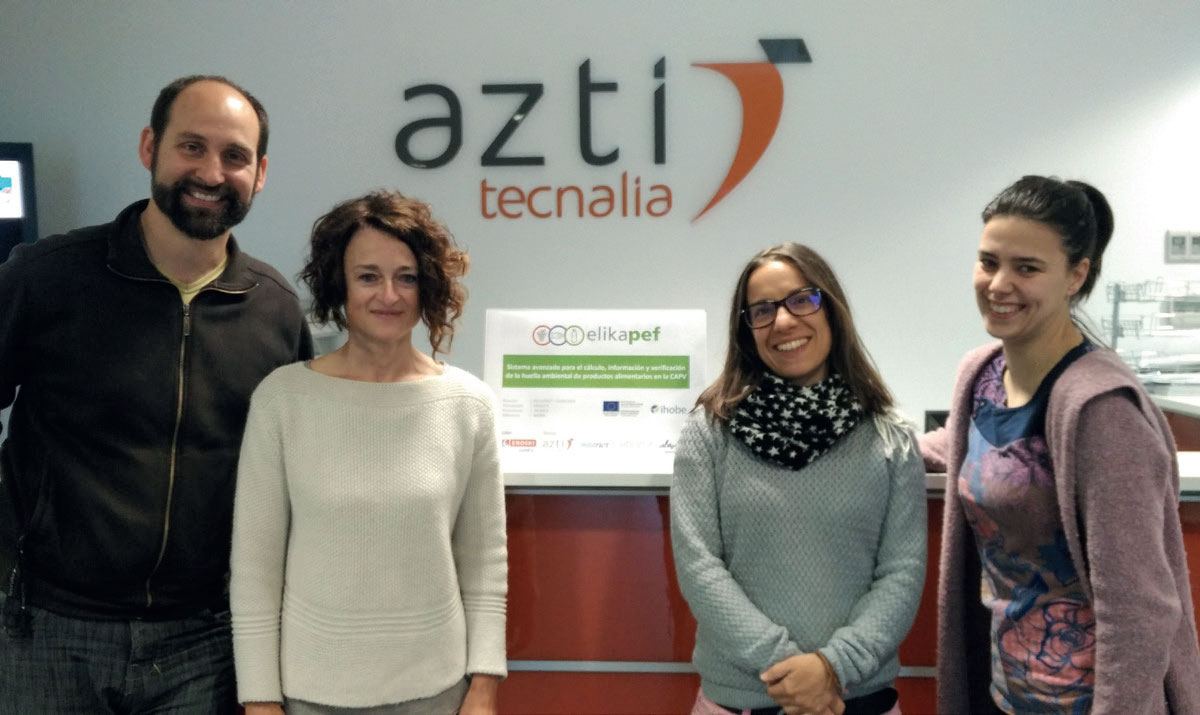ELIKAPEF
ENVIRONMENTAL FOOTPRINT OF FOOD PRODUCTS IN THE BASQUE COUNTRY
WASTE AND EMISSIONS FROM THE FOOD CHAIN ACCOUNT FOR APPROXIMATELY 10% OF THE EU TOTAL. In 2011, the European Commission stressed that consumers have the right to know the environmental impacts of products and to receive adequate information to easily identify a truly sustainable option. However, the increasing number of initiatives for assessing and reporting environmental performance creates confusion among consumers and additional costs for companies. In this context, the 2013/179/ EU: Commission Recommendation of 9th April 2013 defi ned common methods to measure and communicate the life cycle environmental performance of products, services and organisations based on a comprehensive assessment of their environmental impact throughout their life cycle, called the Product Environmental Footprint (PEF). Implementing this methodology provides a competitive advantage for those companies that apply it to their products, but there are barriers to its implementation, such as the difficulty of data collection and information management in a globalised value chain.
EROSKI, the distribution co-operative, led ELIKAPEF with the collaboration of AZTI Technology Centre, the industrial software company INGENET, the natural water bottling company BALENZATEGUI, and the wine producer ERREKALDE TXAKOLINA.

DRIVING FACTOR


 OBJECTIVES
OBJECTIVES
- Implement a system and methodology in the food chain that allows the calculation and effective reporting of the environmental footprint of food products in the Basque Country, according to the European Commission directives.
 RESULTS
RESULTS
- Development of an innovative tool, pioneering to the extent that the European Commission’s Environmental Product Footprint methodology has been in full development in parallel to ELIKAPEF development, which simplifies environmental information collection and facilitates its management for the calculation of environmental footprints and comparison of products and suppliers.
- Definition of certification requirements adapted for verification of the product environmental footprint calculation in the food sector.
- Methodology validation with calculation of environmental footprints of a txakolí wine product and a bottled water from two Basque food SMEs. The results show a better environmental profile for both products than the European benchmark for these categories.
- B2B communication protocol to provide a competitive advantage to companies that do not reach the end consumer.
- Preparation of guidelines for the implementation of best environmental techniques for the wine and water sectors.
- Assessment of consumers’ knowledge of some of the main environmental labels. The results show a great lack of knowledge of these labels and that preferences in environmental information communication to facilitate purchasing are combined colour and character systems.
 CONCLUSIONS
CONCLUSIONS
- ELIKAPEF’s work has allowed the consolidation of the value chain and a continuation of the line of work with new initiatives.
- The tool flexibility also allows EROSKI to move forward with the collection of environmental information on products in categories other than those of the project.
ENVIRONMENTAL
TECHNICAL
ECONOMIC
COMMERCIAL
ON THE MARKET




